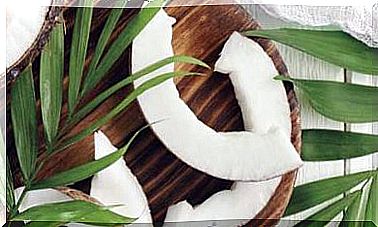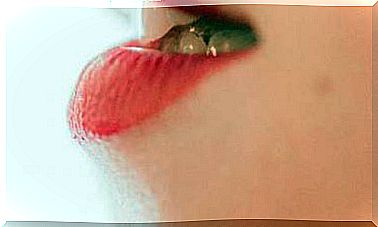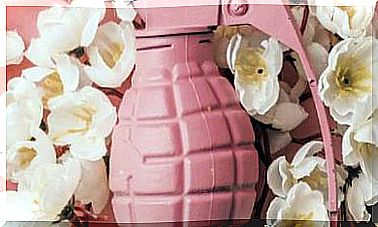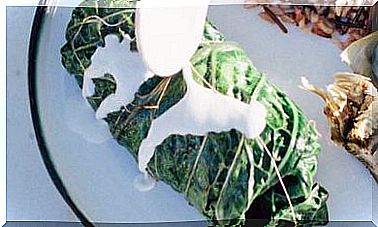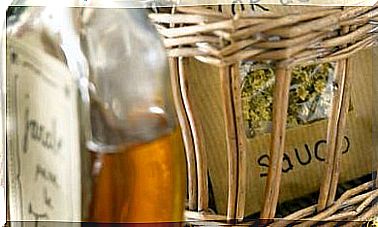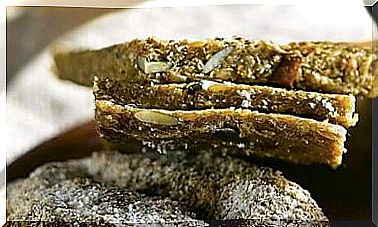4 Delicious Ferments (and How To Prepare Them At Home)
The freshness of the ferments and how easy they are to prepare in summer make them the ideal food for the summer. And they are super beneficial for your health!
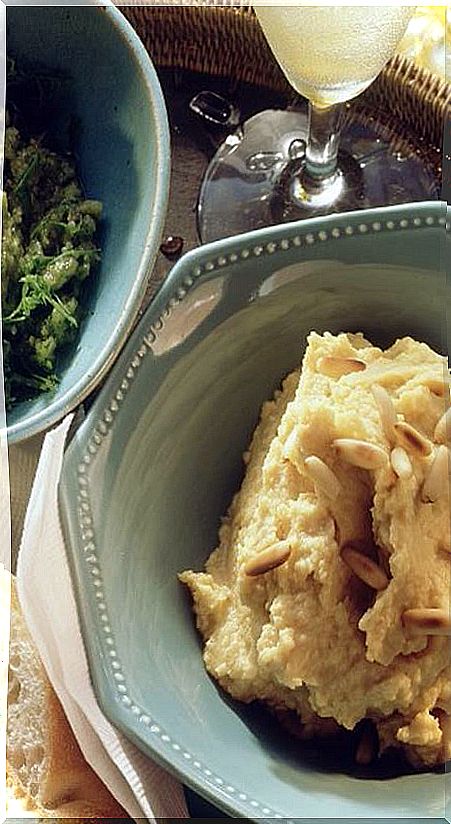
One of the good things about summer is that thanks to the high temperatures we can quickly ferment many things, from breads to Chinese cabbage to make kimchi.
The fermented ones are easy to make at home and you just have to take into account some hygiene considerations to avoid them getting bad: that all the utensils are well clean, that the places where we leave them are also clean, etc.
Instead of the classic fermented ones, I am going to propose some less common preparations that you will like a lot. This way you will learn both to ferment and to make new dishes.
Fermented recipes to make at home
We are going to work with different types of ferments : yeasts, fungi and bacteria. Each of them causes a different result and is traditionally used for specific purposes. For example the yeasts Saccharomyces cerevisiae are used to make bread while the fungi Rhizopus oligosporus or Rhizopus oryzae are used to make tempeh.
They are generally not interchangeable. That is, you can leavened a bread dough with Lactobacillus acidophilus (which is normally used in yogurt), but the result will not be the same as with baker’s yeast.
The lactofermentación not mean that dairy use, otherwise bacteria Lactobacillus, which convert sugars into lactic acid. This acid is also a good natural preservative that inhibits the growth of bacteria that are bad.
The simplest way to get ferments is by using products that already contain them (so we make a home culture from, for example, vegetable yogurts, natto or sauerkraut) or by buying them (for example, baker’s yeast is sold in any supermarket, fresh or dry).
Fermented hummus
Hummus is already a delicious and easy to prepare vegetable pate: you just need to mix the ingredients and you are done. Well, you can make a fermented hummus, which will have an extra flavor and will be a little more digestible.
- Make a normal hummus but adding a couple of tablespoons of plain soy yogurt (unsweetened and without flavors), or 3 tablespoons of the sauerkraut broth.
- Put it in a jar that closes with a vacuum and leave it at room temperature for 8-14 hours. If it is too hot (over 26ºC), put it in a cooler place in the house.
- You will notice that little bubbles have formed in the mixture. Then put it in the fridge and leave it for 8 more hours.
- Try it and if you want, leave it for 8 more hours before serving.
The result is a very creamy hummus, almost like a mousse, a little more acidic and with a new range of flavors. It goes very well with pickles like pickles and olives.
For it to ferment: it is important that the soy yogurt we use is real yogurt, that is, that it contains bacteria such as lactobacillus (bulgaricus, casei, etc.), Streptotoccus thermophilus, Bifidobacterium, etc., or a mixture of these.
In case we can not find vegetable yogurts, we can use the sauerkraut broth, which as long as it is well preserved will contain live Lactobacillus that will begin fermentation as soon as the mixture is at room temperature.
We can also buy probiotics in capsules or powders in pharmacies and some natural food stores that are useful for this recipe. Just use a small amount (⅛ teaspoon or 1 capsule).
How to tell if it has gone bad : stains or red or black colors on the surface or all over the hummus, the smell of pocho, rotten eggs … Come on, all signs of bad smell and bad color.
This is easily avoided by sterilizing the container that we are going to use by immersing it in boiling water for 3 minutes to sterilize it. I use a glass jar with a hermetic closure and thus avoid upsets.
Chickpea natto
Natto is a preparation of soybeans cooked and fermented with Bacillus subtilus var. Natto. The soybeans are soaked, boiled and then mixed with this crop, allowing it to ferment for a while.
The resulting product is whole soybeans with a strong flavor, and a kind of mucilage that covers them, which the more it is stirred, the more elastic it becomes. In Japan it is a very popular food that is still eaten for breakfast, putting it on a bowl of rice.
Natto can be made with other legumes in addition to soy. Theirs is to make it with soybeans because it provides the best texture and flavor, but we can ferment other legumes such as chickpeas with the same natto culture.
Ingredients
- 1.5 cups of cooked chickpeas
- 1 packet of natto to use as a culture or ½ teaspoon of Bacillus subtilis var. Natto
Preparation
- Put the chickpeas in the steamer and steam over medium-high heat for 3-4 minutes.
- While the chickpeas are heating, put 1 teaspoon of natto (or bacillus natto) in a bowl and add 100 ml of hot water. Mix very well until a translucent white broth forms. Take out the soybeans, we will use only the broth.
- Put the hot chickpeas in the container in which you are going to make the natto (I recommend a sterilized glass jar), add the broth, mix it very well and cover it with triple muslin or a cloth (sterilized) with a rubber band. These bacteria do need to breathe.
- Leave it 12-24 hours in a warm place. When the legumes have a white patina, stir it well, close it with a hermetic lid and leave it in the fridge for at least 8 hours.
- After this time stir it well, you will see that the same threads have been formed as in the traditional natto. It’s ready to drink with a splash of shoyu or tamari.
For it to ferment : it is important that everything we use is very clean, preferably sterilized in boiling water. These bacteria are thermophilic and do not die with hot water, but others do that can be harmful and can ruin the culture.
I recommend making it from purchased natto because the bacteria can be more difficult to obtain than the natto itself (they sell it in some vegan stores, in Japanese stores, oriental supermarkets, etc.) and the preparation is just as comfortable, it does not have much mystery .
Natto needs a higher temperature than other homemade ferments, so it is best to leave it in a warm place in the house. It also needs to breathe, so we have to ensure that some air enters (a little), hence the closure with triple muslin or a cloth. It is essential that it is freshly sterilized or we can contaminate our natto.
In summer the conditions are very good because it is very hot, but in winter we will have to put the mixture in a thermos and keep it warm.
How to know if it has gone bad : smell of rotten, sulfurous, mold on the surface, etc.
It should look white at first and then, when removed, sticky and stringy. If it does not form threads at all, it may not have fermented.
To avoid this, everything has to be well sterilized and our natto or bacteria, alive. That is, it is not expired, it has not been open for a long time, etc.
Natto (purchased or homemade ) can be frozen, the bacteria do not die. If you need to keep it for a while, wrap it well, put it in a tightly closed container and put it in the freezer. So you will have whenever you want to make your own crops.
Fermented polenta
The polenta is very easy to prepare, basically there just to boil hominy with water, salt and spices you want. Fermented polenta is great to serve with savory snacks like olives, pickles, or pickled aubergines.
The result has a very good taste and an original grainy texture, similar to a cooked couscous or quinoa.
Ingredients
- 1/2 cup polenta
- 1.5 cups of water
- 2 tablespoons soy yogurt (plain, unsweetened and unflavored)
Preparation
- Mix the three ingredients and put it in a jar with a tight lid. Close it and let it ferment for 12-24 hours (if it is very hot, in 12 hours it will have many bubbles).
- After this time you have your polenta ready, you just have to cook it as normal, but with 1 cup of water and until it is tender and with the consistency you want.
For it to ferment : as with hummus, let the yogurt have ferments or let’s use a probiotic capsule. If possible, the temperature should not drop below 18ºC or rise above 26ºC, otherwise it will not ferment, or it will go bad. When the mixture looks fluffy it is ready.
How to know if it has gone bad : if instead of being a spongy mass, it forms a shapeless, irregular mass, with darker colored spots … it is because it has gone bad.
If you don’t know what to do with it once it’s fermented, store it in the fridge, it will last a couple more days, but don’t leave it out because it will continue to ferment and there will come a point where it tastes and smells bad. The smell of a well-fermented polenta should be slightly acidic, not pungent.
Sauerkraut with kale
The sauerkraut is widely used as a complement to dishes or as a condiment. It can be made at home and also add some kale leaves for a greater range of flavors and colors.
The sauerkraut home holds very well in the fridge whenever you keep in resealable cans. You don’t need to add bacteria cultures or anything like that, the process is much simpler.
Ingredients
- 1 small cabbage
- 3-4 kale leaves (stems removed) or collard greens
- 1-2 teaspoons of salt
- 1 teaspoon of traditional mustard or mustard seeds
- ½ teaspoon fennel seeds
- 2 bay leaves
- 5-6 black pepper balls
Preparation
- Remove the outer leaves from the cabbage. Grate the cabbage and wash it in a colander or drainer under running water.
- Chop the kale, wash it too, and mix it with the cabbage. Drain everything very well and mix it with the rest of the ingredients.
- Put it all in the jars or containers that you have prepared, tightly, close them and let it ferment in a warm place but away from the sun.
- Check it every day, open it and squeeze it with a spoon. It will release quite a bit of fluid the first day.
- At a temperature of about 24ºC it will take 5-10 days in total to be ready, but you can try it from the second day, and when it has a flavor that you like, transfer it to hermetically sealed jars and the fridge to stop the fermentation. .
So that it ferments : in this case we depend on the bacterial flora of the cabbage itself, which can vary from one piece to another and also according to the temperature. The important thing is that the cabbage remains tight in the container (which can be a container or glass jars), that it does not get air constantly and that it is at a temperature between 20 and 26ºC so that it ferments quickly. If it is colder it will take longer (it may take weeks), and if it is warmer we will have to find a cooler place.
How to know if it has gotten sick : mainly because of the smell. Mold spots don’t always come out, but if you see black, red, or green mold, throw it out. The smell will be mild at first but it will become more intense, vinegary but fruity. It is normal for it to make bubbles, but it is not normal for it to foam (if it generates foam it will have become bad). Always check that the container closes well.
